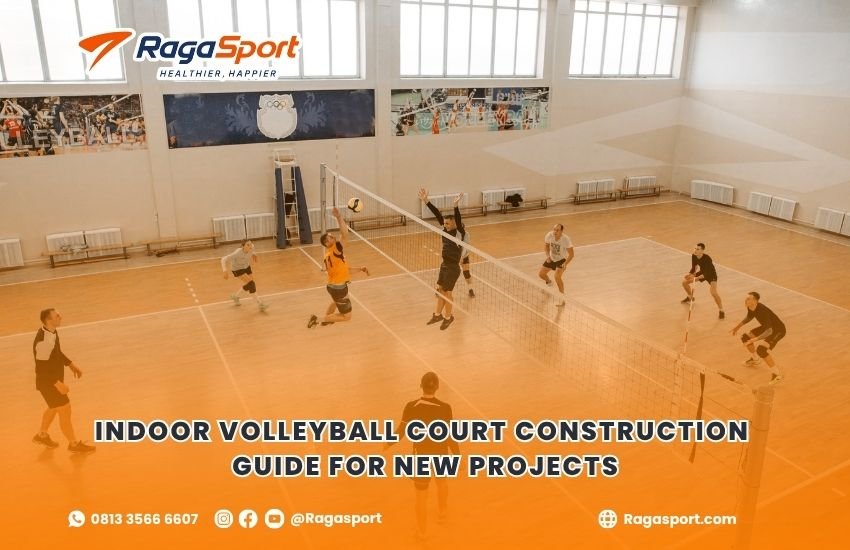Indoor Volleyball Court Construction Guide for New Projects
Understanding Indoor Volleyball Court Construction
Building an indoor volleyball court is a significant investment that requires detailed planning, adherence to international standards, and the right materials. Whether the facility is for schools, sports clubs, or commercial sports centers, a properly constructed court ensures durability, player safety, and professional performance.
Table of Contents
1. Site Selection and Preparation
1.1 Choosing the Right Location
The first step is selecting a suitable location with enough space for the court and surrounding safety zones. Ensure that the area is level, accessible, and has adequate ventilation and structural support for the building.
1.2 Site Preparation
Once the site is selected, it must be cleared and leveled. This includes removing debris, preparing drainage systems, and installing a stable sub-base to support the flooring system.
2. Standard Indoor Volleyball Court Dimensions
2.1 Court Size Requirements
Based on FIVB standards, an indoor volleyball court must be 18 meters long and 9 meters wide. This allows for proper gameplay and competitive use.
2.2 Safety and Free Zones
The free zone around the court should be at least 3 meters on all sides. For international-level play, it’s recommended to have up to 5 meters of clearance.
2.3 Ceiling Height
The minimum ceiling height must be 7 meters, with 12.5 meters preferred for major tournaments. This clearance is essential to allow for high serves and spikes.
3. Flooring Systems
3.1 Hardwood Flooring
Maple hardwood is a premium choice for professional courts. It offers excellent shock absorption, aesthetics, and durability, but it requires regular maintenance.
3.2 Synthetic Flooring
Vinyl and polyurethane are more budget-friendly alternatives. These materials are easy to clean, slip-resistant, and ideal for multi-sport facilities.
3.3 Key Considerations
Ensure the flooring system meets standards for:
- Shock absorption
- Ball bounce consistency
- Traction and grip
- Maintenance requirements
4. Lighting Installation
4.1 Lighting Standards
Proper lighting is critical for visibility and gameplay. General illumination should be at least 500 lux for training courts, and up to 1500 lux for professional competition.
4.2 Light Placement and Design
Use LED fixtures placed high and angled correctly to eliminate glare and shadows. Lighting must be uniformly distributed across the entire court.
4.3 Energy Efficiency
LED systems not only provide high luminosity but also help reduce energy consumption and long-term costs.
5. Ventilation and Climate Control

5.1 Air Circulation
Install HVAC systems to manage humidity and temperature. Good airflow prevents condensation on floors and improves player comfort.
5.2 Insulation Materials
Choose proper insulation for walls and roofs to help maintain indoor temperatures efficiently and reduce noise.
5.3 Humidity Control
Use dehumidifiers in areas with high moisture content to prevent damage to wooden or synthetic flooring.
6. Wall Padding and Equipment Safety
6.1 Wall Protection
Install foam padding around walls within 3 meters of the court boundary to protect players from impact injuries.
6.2 Net Systems
Use adjustable and durable volleyball net systems that comply with international specifications. Ensure proper tensioning and safety anchors.
6.3 Referee and Player Zones
Designate safe areas for referees, benches, and substitutions. Include space for first aid and emergency equipment.
7. Spectator and Facility Amenities
7.1 Seating Options
Plan for bleachers or modular seating depending on the expected audience. Elevated seating areas provide better visibility and improve spectator experience.
7.2 Safety Barriers
Install netting or protective barriers between spectators and the court to ensure safety during play.
7.3 Accessibility
Include ramps, accessible toilets, and seating to comply with universal design standards.
8. Budget Planning and Timeline
8.1 Estimated Costs
Cost varies by material, region, and court complexity. General budget allocation:
- Structure and construction: 40%
- Flooring system: 25%
- Lighting and HVAC: 15%
- Equipment and accessories: 10%
- Safety and other features: 10%
8.2 Project Timeline
A standard indoor volleyball court project typically takes 10–16 weeks, including design, permits, construction, and finishing.
8.3 Contingency Planning
Always set aside 10–15% of your total budget to cover unexpected expenses or delays.
9. Hiring the Right Contractor
9.1 Sports Construction Experience
Choose a contractor with proven experience in building indoor courts. They should understand surface performance, safety codes, and sport-specific needs.
9.2 Materials and Warranty
Ensure the contractor provides high-quality materials and offers warranties for flooring, structure, and equipment.
9.3 Regulatory Compliance
All construction must follow local building codes, fire safety regulations, and FIVB guidelines.
10. Post-Construction Maintenance
10.1 Routine Cleaning
Keep the court clean with appropriate non-abrasive tools and products. Avoid using excess water on wooden surfaces.
10.2 Annual Inspections
Schedule annual professional checks for flooring condition, lighting, HVAC performance, and structural integrity.
10.3 Upgrades and Repainting
Lines and surfaces may fade over time. Regular repainting or resurfacing keeps the court professional and compliant with standards.

Ready to Build the Perfect Indoor Volleyball Court?
Let Raga Sport turn your vision into reality with expert construction, top-quality materials, and a field that meets every standard.
👉 Explore our projects at ragasport.com
📲 Chat with our team now via WhatsApp: Click Here

